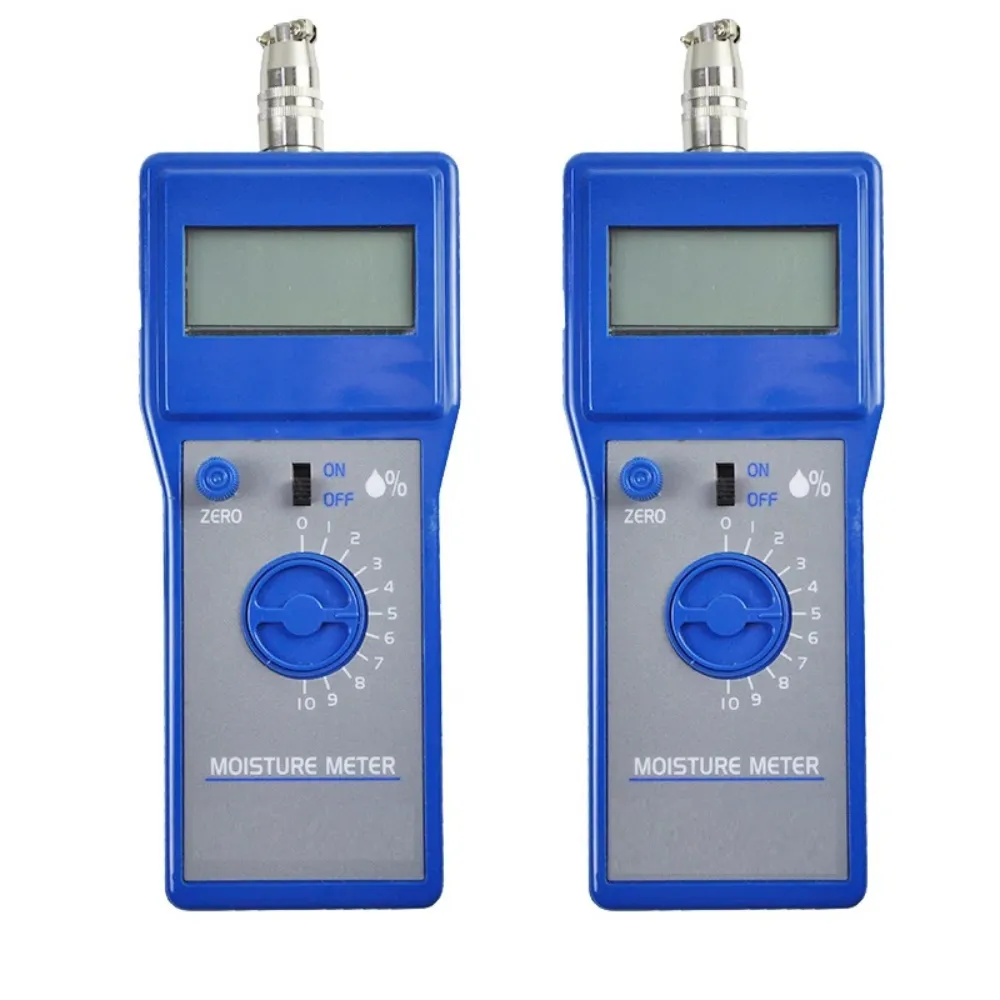
How to Use Moisture Meters for Grain Preservation?

Grain preservation holds immense importance due to significant spoilage rates. Global grain spoilage averages a 20% loss, with fluctuations ranging from 1% to 50%. Moisture content plays a crucial role in maintaining grain quality. High moisture levels can lead to mold growth and spoilage. In Africa, moisture-related causes account for 15% of post-harvest losses. A storage moisture meter becomes an essential tool. This device helps monitor and control moisture levels effectively. Accurate measurements prevent spoilage and ensure optimal grain quality.
Understanding Moisture Content in Grains
Why Moisture Content Matters
Impact on grain quality
Grain quality depends heavily on moisture content. Accurate moisture measurement ensures grains maintain their nutritional value and texture. The Significance of Accurate Grain Moisture Measurement highlights that precise measurements prevent spoilage and optimize drying processes. Farmers can safeguard crops against mold and toxins with accurate data. This practice maximizes profits and maintains grain quality.
Risks of improper moisture levels
Improper moisture levels pose significant risks to grain storage. High moisture can lead to spoilage and insect infestations. The Impact of High Moisture on Stored Grain Quality notes that molds like Aspergillus can render grains unfit for consumption. Farmers must monitor moisture levels to avoid these issues. Proper moisture management prevents deterioration and loss of grain quality.
Common Problems Caused by Incorrect Moisture
Mold growth
Mold growth is a common issue with high moisture content. Grains with excess moisture provide an ideal environment for mold. The Control of Grain Deterioration Through Moisture Content Measurement study emphasizes the importance of measuring moisture to control mold growth. Farmers can prevent spoilage by maintaining optimal moisture levels. Regular monitoring helps ensure grains remain safe for consumption.
Grain fires
Grain fires result from incorrect moisture levels during storage. High moisture content increases the risk of spontaneous combustion. The Importance of Grain Moisture Testing in Agriculture study highlights the need for accurate moisture testing. Farmers can determine the best harvest time and ensure storage stability. Proper moisture management reduces fire risks and protects valuable grain stocks.
Types of Moisture Meters

Handheld Moisture Meters
Features and benefits
Handheld moisture meters offer portability and ease of use. Farmers can quickly measure moisture levels in various grains like rice, corn, and wheat. The compact design allows for convenient on-site testing. Grain Moisture Meter models provide accurate readings, ensuring optimal grain quality. These devices help prevent spoilage by allowing timely adjustments to storage conditions.
Best use cases
Handheld moisture meters work best for small to medium-sized farms. Farmers can use them during harvest to determine the right time for collection. These meters also prove useful in storage facilities where quick checks are necessary. Regular monitoring with handheld devices helps maintain grain quality and prevent losses.
In-line Moisture Meters
Features and benefits
In-line moisture meters integrate directly into processing lines. These meters provide continuous moisture monitoring during grain processing. The real-time data helps optimize drying and storage processes. Grain Moisture Meter systems ensure consistent quality across large batches. This technology reduces the risk of spoilage and enhances overall efficiency.
Best use cases
In-line moisture meters suit large-scale operations and processing plants. These devices monitor moisture levels during milling or packaging. Continuous data collection helps maintain quality standards and reduce waste. In-line systems support large production volumes, ensuring consistent grain quality from start to finish.
How to Use Storage Moisture Meters Effectively

Best Practices for Accurate Measurements
Calibration and maintenance
Calibration ensures the accuracy of a storage moisture meter. Regular calibration aligns the device with standard measurements. Farmers should follow manufacturer guidelines for calibration. Proper maintenance extends the lifespan of the moisture meter. Cleaning the device after each use prevents damage. Storing the meter in a safe place avoids unnecessary wear and tear.
Consistent measurement techniques
Consistent measurement techniques provide reliable data. Farmers should take multiple readings from different grain samples. This approach accounts for variations in moisture content. Using the same method for each measurement ensures consistency. Farmers should document each reading for future reference. This practice helps track changes in moisture levels over time.
Interpreting Storage Moisture Meter Readings
Understanding the data
Understanding the data from a storage moisture meter is crucial. The readings indicate the water content in grains. High moisture levels suggest a risk of spoilage. Low moisture levels may lead to weight loss. Farmers should compare readings with recommended moisture levels. This comparison helps identify any necessary adjustments.
Making informed decisions
Making informed decisions relies on accurate data interpretation. Farmers can adjust drying processes based on moisture readings. Proper adjustments prevent spoilage and maintain grain quality. Monitoring moisture levels helps determine the best storage conditions. Farmers can optimize storage environments to extend grain shelf life. Informed decisions lead to reduced losses and increased revenue.
Benefits of Using Moisture Meters
Prevention of Grain Spoilage
Extending shelf life
Moisture meters play a crucial role in extending the shelf life of grains. Accurate moisture measurements help farmers maintain optimal conditions for grain storage. Proper moisture levels prevent mold growth and spoilage. Farmers can store grains for longer periods without quality degradation. This practice ensures that grains remain safe and consumable over time.
Maintaining quality
Maintaining grain quality becomes easier with moisture meters. These devices provide precise readings that allow for immediate adjustments. Farmers can ensure that grains retain their nutritional value and texture. High-quality grains fetch better prices in the market. Consistent monitoring with moisture meters guarantees that grains meet industry standards.
Economic Advantages
Reducing losses
Moisture meters significantly reduce post-harvest losses. Farmers can detect high moisture levels early and take corrective actions. This proactive approach prevents spoilage and deterioration. Reduced losses mean more grains available for sale, increasing overall yield. Farmers benefit from improved efficiency and reduced waste.
Increasing revenue
Increased revenue is a direct benefit of using moisture meters. Grains stored under optimal conditions maintain their market value. Farmers can sell high-quality grains at competitive prices. Accurate moisture readings help optimize drying processes, reducing energy costs. The combination of reduced losses and increased sales leads to higher profits.
Moisture meters play a vital role in grain preservation. Accurate moisture measurement ensures grain quality and prevents spoilage. Implementing best practices with moisture meters enhances efficiency. Farmers should regularly calibrate and maintain these devices for optimal performance. Consistent monitoring helps make informed decisions about storage conditions.
Dickey John: A moisture tester for grain is essential for efficient and profitable agriculture.
Grain preservation requires attention to detail. Moisture meters provide the necessary data to maintain high standards. Proper use of these tools leads to increased revenue and reduced losses.


